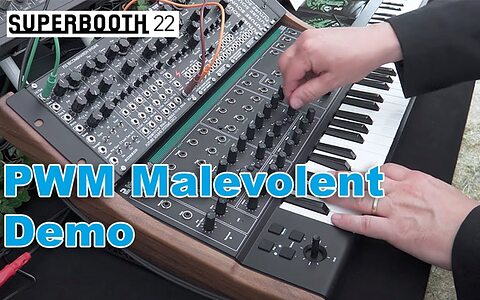
Superbooth 2022 - Gamechanger Audio Motor Synth MkII
Gamechanger Audio have updated their Motor Synth; we caught up with them at Superbooth 2022 for a demonstration.

Gamechanger Audio have updated their Motor Synth; we caught up with them at Superbooth 2022 for a demonstration.

We speak to new brand PWM about their first instrument, Malevolent, a semi-modular monosynth.

We speak to Teenage Engineering at Superbooth 2022 about the OP-1 Field, an updated version of their portable synthesizer.

Erica Synths give us a demonstration of their new Syntrx II and Perkons HD-01 instruments.

We get a demo of the new Oberheim OB-X8, one of the most highly anticipated launches at Superbooth 2022.

Freqtube FT-1 combines an outboard valve processing unit with a DAW plug-in for control and recall.

Silhouette Eins is an innovative new synthesizer that uses a camera and light table to generate waveforms from visual sources in real time.

We speak with Tiptop Audio at Superbooth 2022, where they talk us through their latest Buchla 200 Series recreation.

Rodec talk us through the MX-Modular, their modular 19" mixer system for studio and stage.

We speak to Rhodes about the latest version of their iconic piano, and get a demonstration of its sounds and new features.